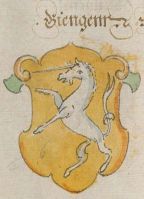Giengen an der Brenz: Difference between revisions
Knorrepoes (talk | contribs) |
Knorrepoes (talk | contribs) m (Text replacement - "''' :" to "''':") Tags: Mobile edit Mobile web edit |
||
| (One intermediate revision by the same user not shown) | |||
| Line 4: | Line 4: | ||
| | | | ||
<center>''' {{uc:{{PAGENAME}}}} '''</center><br> | <center>''' {{uc:{{PAGENAME}}}} '''</center><br> | ||
'''Country''' : Germany [[File:germany.jpg|60 px|right]]<br><br><br><br> | '''Country''': Germany [[File:germany.jpg|60 px|right]]<br><br><br><br> | ||
'''State''' : [[Baden-Württemberg]][[File:badenwur.jpg|60 px|right]]<br><br><br><br> | '''State''': [[Baden-Württemberg]][[File:badenwur.jpg|60 px|right]]<br><br><br><br> | ||
'''District (Kreis)''' : [[Heidenheim (kreis)|Heidenheim]][[File:Heidenhe.kreis.jpg|60 px|right]]<br><br><br> | '''District (Kreis)''': [[Heidenheim (kreis)|Heidenheim]][[File:Heidenhe.kreis.jpg|60 px|right]]<br><br><br> | ||
'''Additions''':<br> | '''Additions''':<br> | ||
* 1972 [[Burgberg (Giengen an der Brenz)|Burgberg]] | * 1972 [[Burgberg (Giengen an der Brenz)|Burgberg]] | ||
| Line 27: | Line 27: | ||
===Origin/meaning=== | ===Origin/meaning=== | ||
Giengen was a possession of the Staufen family and received city rights in the middle of the 13<sup>th</sup> century. Already the oldest seals, known since 1293, show the unicorn as the symbol for the city. Its meaning is not known. The arms of the city have always been the unicorn. The seals, however, showed the imperial eagle. Giengen was an imperial city and thus had the right to use the eagle. To distinguish the seal from seals of other cities, the letters G and I, later only G were added. In the 17<sup>th</sup> century both the arms with the unicorn and arms with the imperial eagle were used together. | Giengen was a possession of the Staufen family and received city rights in the middle of the 13<sup>th</sup> century. Already the oldest seals, known since 1293, show the unicorn as the symbol for the city. Its meaning is not known. The arms of the city have always been the unicorn. The seals, however, showed the imperial eagle. Giengen was an imperial city and thus had the right to use the eagle. To distinguish the seal from seals of other cities, the letters G and I, later only G were added. In the 17<sup>th</sup> century both the arms with the unicorn and arms with the imperial eagle were used together. | ||
| Line 34: | Line 33: | ||
===Image gallery=== | ===Image gallery=== | ||
<gallery widths=250px heights=200px perrow=0> | <gallery widths=250px heights=200px perrow=0> | ||
File:Giengen an der Brenzjr.jpg|alt=Wappen von Giengen an der Brenz/Arms (crest) of Giengen an der Brenz|The arms in the Armorial Jörg Rügen (1495) | |||
File:Giengen an der Brenz1500.jpg|alt=Wappen von Giengen an der Brenz/Arms (crest) of Giengen an der Brenz|The arms around 1500 | File:Giengen an der Brenz1500.jpg|alt=Wappen von Giengen an der Brenz/Arms (crest) of Giengen an der Brenz|The arms around 1500 | ||
File:Giengen an der Brenz1530.jpg|alt=Wappen von Giengen an der Brenz/Arms (crest) of Giengen an der Brenz|The arms in a manuscript +/- 1530 | File:Giengen an der Brenz1530.jpg|alt=Wappen von Giengen an der Brenz/Arms (crest) of Giengen an der Brenz|The arms in a manuscript +/- 1530 | ||
Latest revision as of 08:39, 16 June 2024
|
Country: Germany State: Baden-Württemberg District (Kreis): Heidenheim Additions:
|
| German | In Blau ein aufgerichtetes goldenes Einhorn. |
| English | blazon wanted |
Origin/meaning
Giengen was a possession of the Staufen family and received city rights in the middle of the 13th century. Already the oldest seals, known since 1293, show the unicorn as the symbol for the city. Its meaning is not known. The arms of the city have always been the unicorn. The seals, however, showed the imperial eagle. Giengen was an imperial city and thus had the right to use the eagle. To distinguish the seal from seals of other cities, the letters G and I, later only G were added. In the 17th century both the arms with the unicorn and arms with the imperial eagle were used together.
When the city became part of Württemberg the imperial eagle was no longer used.
Image gallery
The arms in a 16th century manuscript
The arms by Hupp in the Kaffee Hag albums +/- 1925
Literature: Stadler, K. : Deutsche Wappen - Bundesrepublik Deutschland, 1964-1971.
This page is part of the German heraldry portal Deutsche Wappensammlung |
Heraldry of the World |
|
German heraldry:
|
Selected collector's items from Germany:
|
Contact and Support
Partners:
Your logo here ?
Contact us
© since 1995, Heraldry of the World, Ralf Hartemink 
Index of the site
























